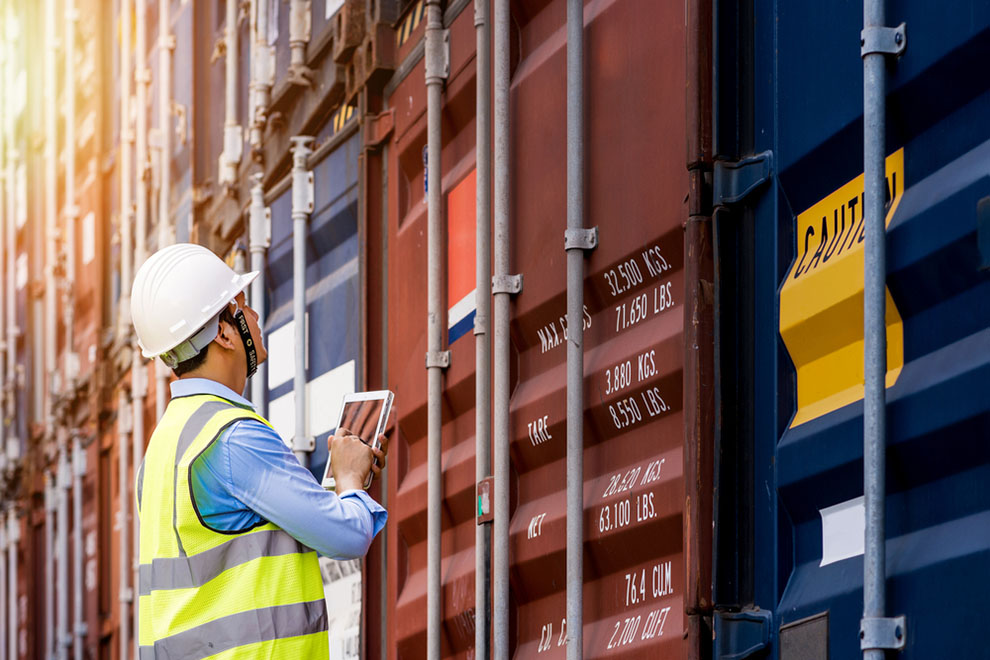
Source: Pakorn Khantiyaporn/Shutterstock.com
Freight costs tend to vary rapidly throughout the supply chain industry. The total cost depends on a variety of factors that go beyond size and weight. Reducing freight costs can help you save hundreds of thousands of dollars every year, depending on the size of your operations. It’s an essential part of your business so do your best to reduce costs without putting your products at risk.
Use this guide to estimate freight costs ahead of time so you don’t end up paying more than you should.
Choose a Logistics Provider
The best you can do is estimate the total cost. It’s impossible to know exactly how much it will cost until you talk to a logistics provider. Compare different rates from different carriers to lock in the lowest price. Develop a strong relationship with the carrier if you plan to ship on a regular basis.
Check Out Our Available Gaylord Boxes for Sale and Save
There’s more than one way to move your cargo around the country. You can always hand it off to a shipping company like UPS or DHL, transport the product yourself or hire a third-party logistics provider with a history of transporting goods in your industry or region.
The supply chain is made up of millions of moving parts. Be flexible with your business model to reduce costs over time.
Source: William Potter/Shutterstock.com
Identify the Freight Class
The first step is to estimate the freight class. While the supply chain continues to evolve, the National Motor Freight Traffic Association has developed a set of clear freight classes to get everyone on the same page. Regardless of where you’re moving your cargo, expect these classes to stay the same.
The freight classes range from 50 to 500 based on the weight per cubic foot. You will need three figures to calculate the weight class, including density (D), weight (W) and volume (V).
The equation works out as D = W/V.
The shipper or carrier will use the freight class to calculate your overall shipping costs.
Plastic Pallets Are Affordable and Durable, too
The least expensive class is 50, which requires a density of 50 pounds or more per cubic foot. This type of freight is easy to handle and will generally fit on a 48” x 48” pallet. Think of extremely dense products that adhere to the shape of the container, such as sand, solvents and other industrial supplies.
The most expensive class is 500, which requires a density of less than one pound per cubic foot. This type of freight tends to take up a lot of space, which can make it difficult to handle.
The freight class also depends on how the cargo will be handled. Fragile items and hazardous materials require additional fees.
To reduce costs, try to package your products in the smallest container possible to avoid empty space. Make sure the container fits neatly on the pallet. Ever wonder: How big is a pallet? Find out in our guide to see how large the container should be. It’s always better to utilize reusable containers when transporting your products. Wood pallets and containers will incur additional fees when going through customs.
Look for plastic pallets for sale to simplify the process.
The lighter the container, the lower your freight costs. Use Gaylord boxes for sale to keep the weight as low as possible.
Source: Jag_cz/Shutterstock.com
Consider Insurance
Consider taking out insurance on your freight so you won’t lose money if anything should happen to your cargo along the way. When shipping on a regular basis, sign up for a yearly insurance policy with annual premiums so you don’t have to take out a new policy every time a package leaves your facility.
Distance and Location
The carrier will also charge you based on the length of the trip. Generally speaking, the closer the destination, the cheaper the freight will be. The rate will vary based on the transportation method. Sending your freight via train or truck allows you to ship heavier products. This is usually the cheapest option, but it may take several days for your products to arrive. Putting your freight on an airplane will increase the costs, while shortening the trip.
It will also cost more to ship freight to rural areas and those with limited transportation. Shipping your products to urban locations and major throughways will give you more options to choose from.
Research the transport geography of logistics and freight distribution to learn how the supply chain has evolved over the last few years.
This will help you estimate your freight costs, but the company in question may offer you a different quote. Keep an open mind. Use these tips to reduce your freight costs as much as possible to save money over time.


